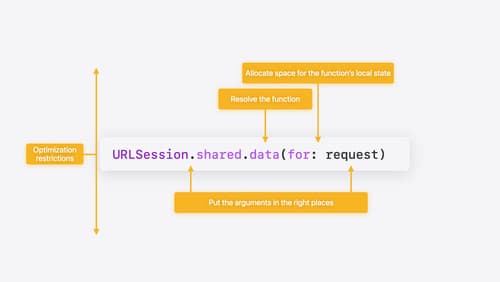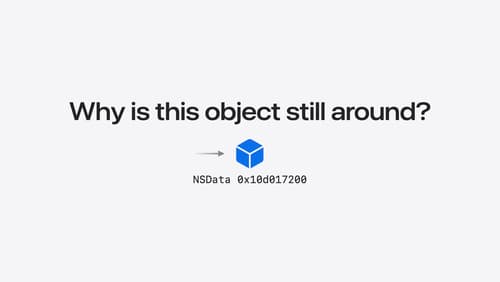cases where class can be collected in the stack of memory
Asked on 2025-06-16
1 search
In Swift, stack memory is used for certain patterns where memory can be scoped, meaning there is a clear point in the function where the memory is no longer needed. This is typical for local variables. Stack memory is very cheap compared to heap memory, which is more flexible but also more expensive due to its dynamic allocation and deallocation capabilities.
Classes in Swift typically use heap memory because they require more flexible memory management due to their reference semantics. However, there are ways to optimize memory usage by using structs with value semantics and inline storage, which can sometimes allow data to be stored on the stack instead of the heap. For example, wrapping a class in a struct and using copy-on-write can help achieve both out-of-line storage and value semantics, as discussed in the session Explore Swift performance.
If you are interested in more details about memory allocation and how it relates to Swift's performance, you might want to check out the chapter on "Memory allocation" in the session "Explore Swift performance."

Explore Swift performance
Discover how Swift balances abstraction and performance. Learn what elements of performance to consider and how the Swift optimizer affects them. Explore the different features of Swift and how they’re implemented to further understand the tradeoffs available that can impact performance.

Analyze heap memory
Dive into the basis for your app’s dynamic memory: the heap! Explore how to use Instruments and Xcode to measure, analyze, and fix common heap issues. We’ll also cover some techniques and best practices for diagnosing transient growth, persistent growth, and leaks in your app.

Improve memory usage and performance with Swift
Discover ways to improve the performance and memory management of your Swift code. We’ll explore ways to refine your code – from making high-level algorithmic changes to adopting the new InlineArray and Span types for finer control over memory and allocations.
